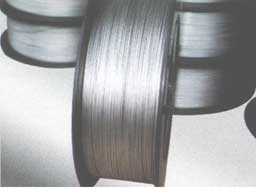All About Wire Gauges
Wire and Gauge
Wire — no matter its source metal — is measured in length and gauge. Higher gauge numbers refer to thinner wire, optimal for running long distances and maintaining conductivity. Lower gauge numbers refer to thicker wire, which can carry more amps at a time. Evaluating the needs of your project and familiarizing yourself with gauging systems will help ensure the right wire selection.
AWG
American Wire Gauge, also referred to as the Brown and Sharpe wire gauge, is the most common North American sizing standard for the measurement and regulation of nonferrous metal conductive wires.
There are 44 standard AWG sizes, in addition to size 00, 000 and 0000. Gauging is named by the number of dies a standard wire size passes through during production, and every six gauge increase is the equivalent to a doubling of the wire’s diameter.
Other Wire Gauges
The Washburn and Moen (W&M), U.S. Steel, and Music Wire Gauges govern different methods and applications for steel-based wire. Additionally, you may find wire measured in Standard Wire Gauge, or SWG. This system is the official Imperial measurement, sanctioned by the British Board of Trade.
The British Standard for metallic materials, BS 6722: 1986, is based completely on the metric system and also includes wire. It’s a common replacement for SWG, and naming is based upon ten times whatever a wire’s diameter measures in millimeters. Often, these wires are referred to by millimeter measurement rather than gauge.
We have wire available in most common metals including nickel wire, titanium wire, stainless wire, carbon wire, galvanized wire. aluminum wire, copper brass and broze wire, and more.
For more information on custom metal and the wiring needs for your next project, contact the Continental Steel Team today.








